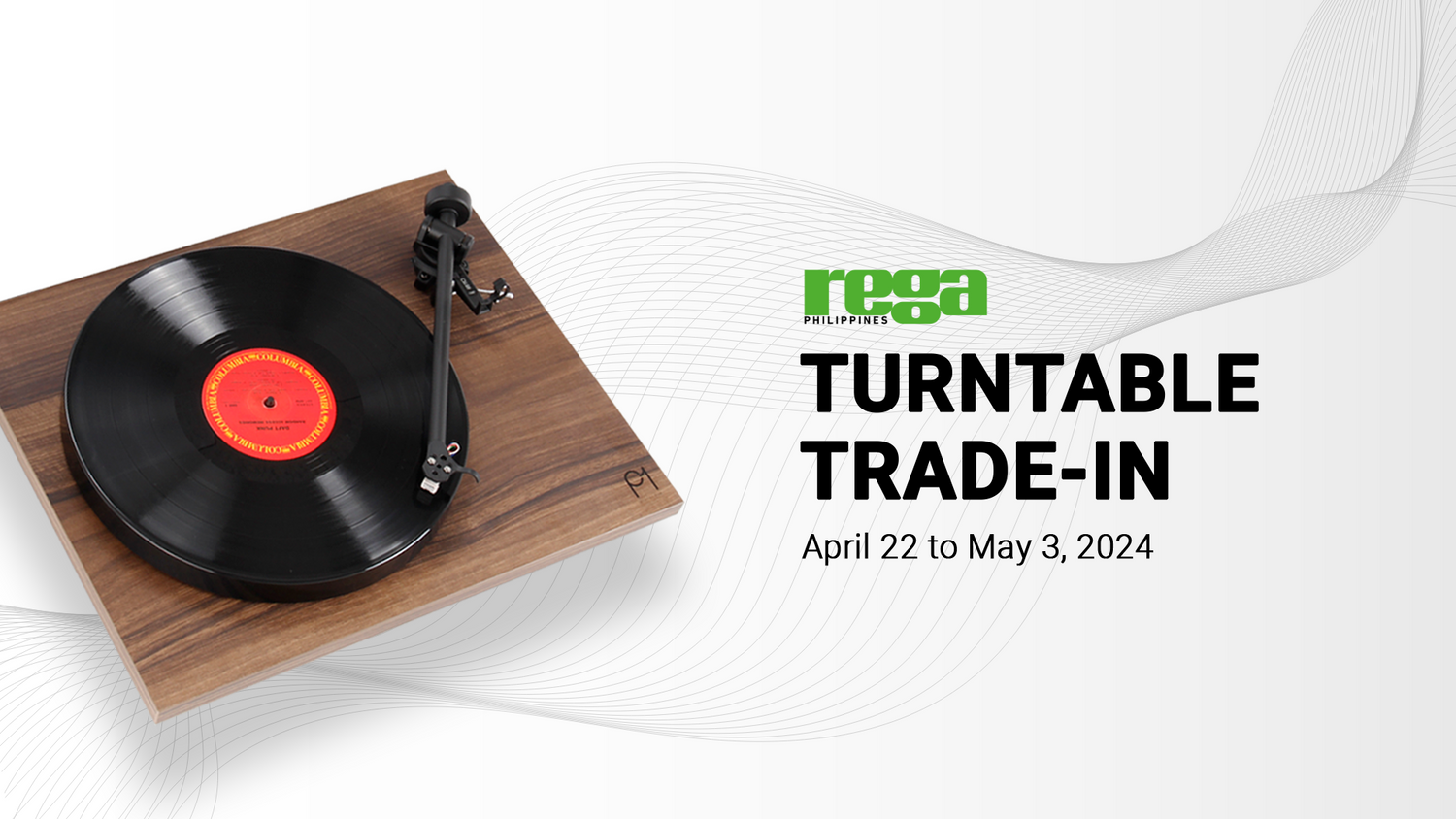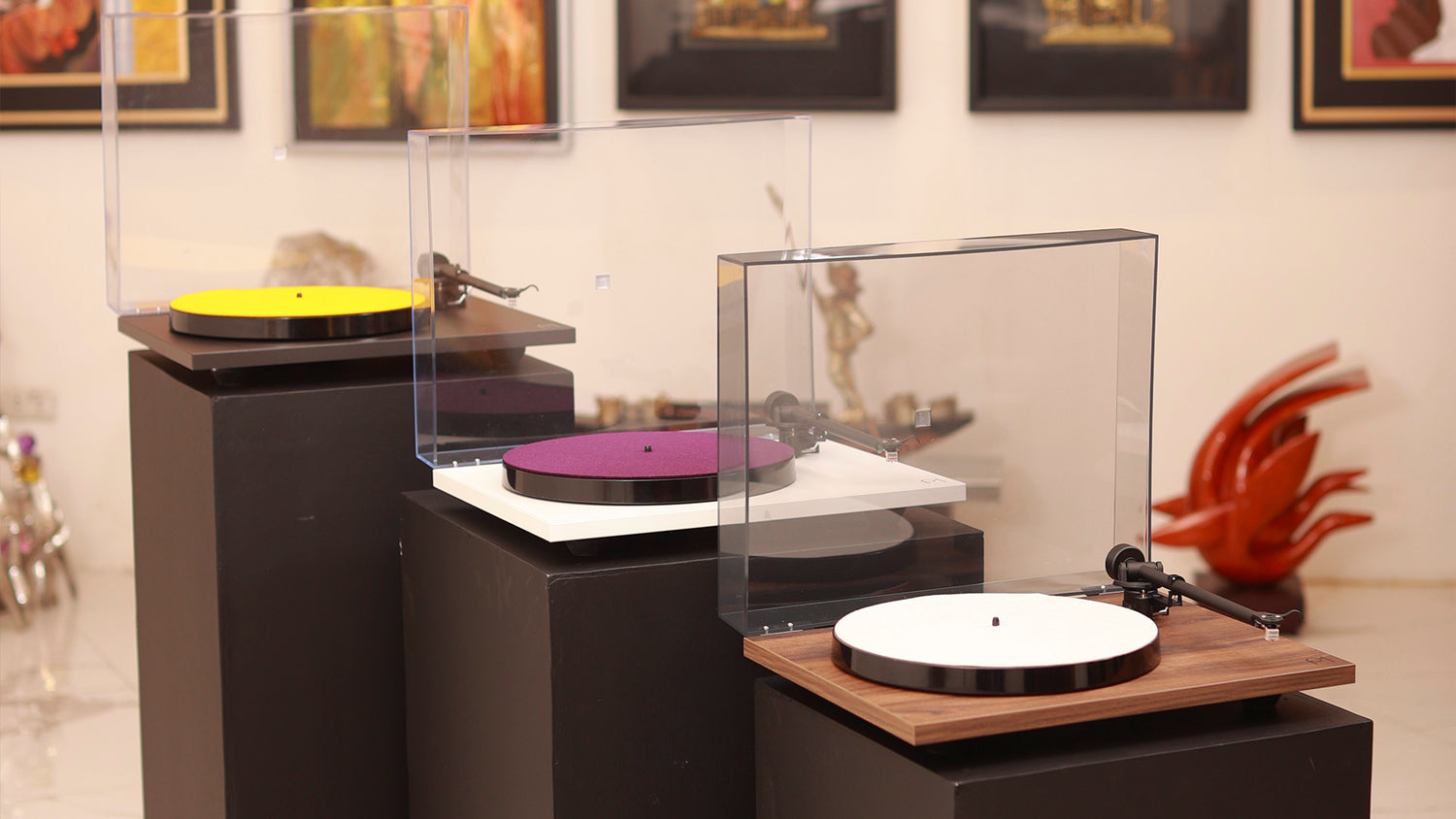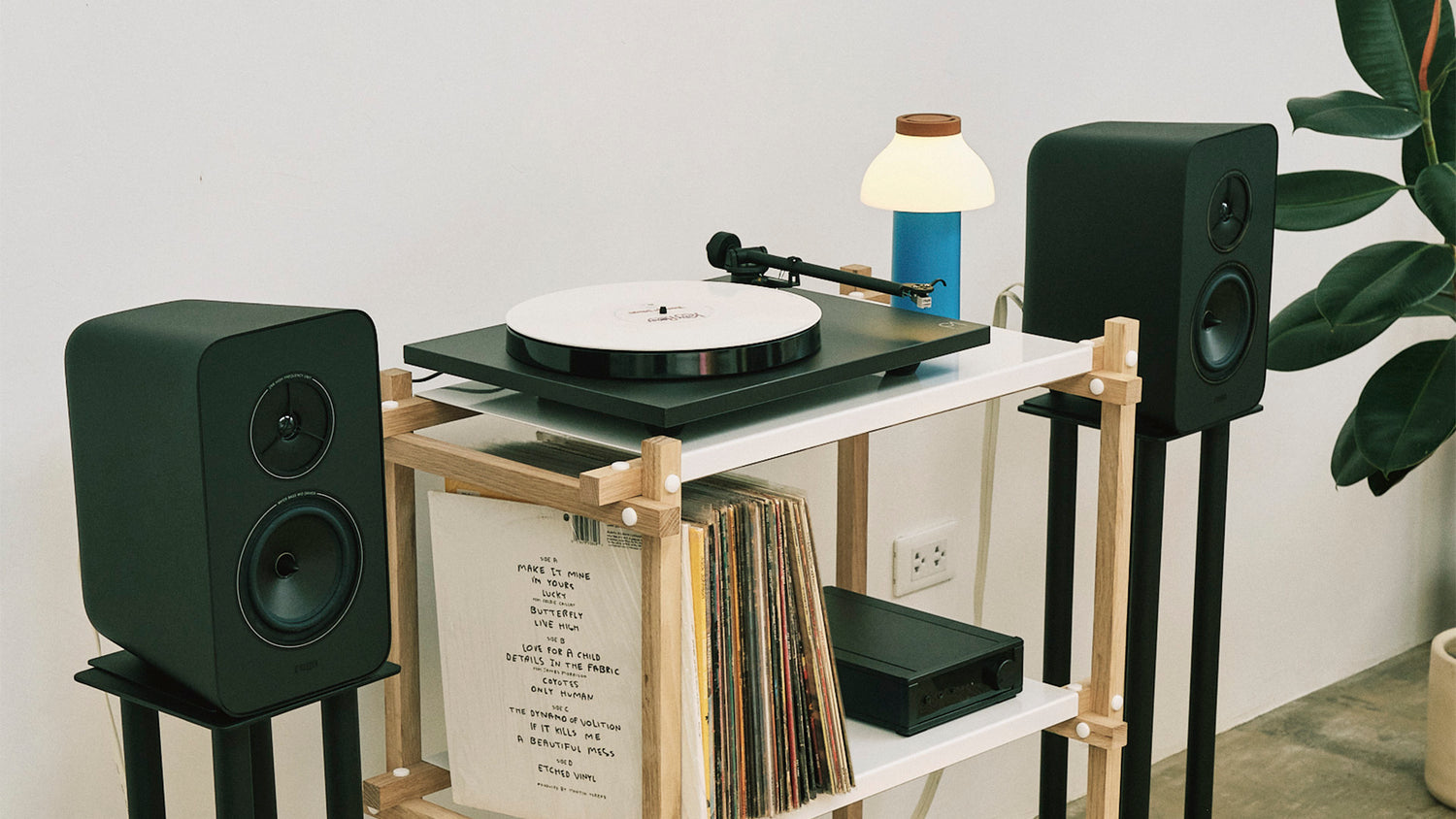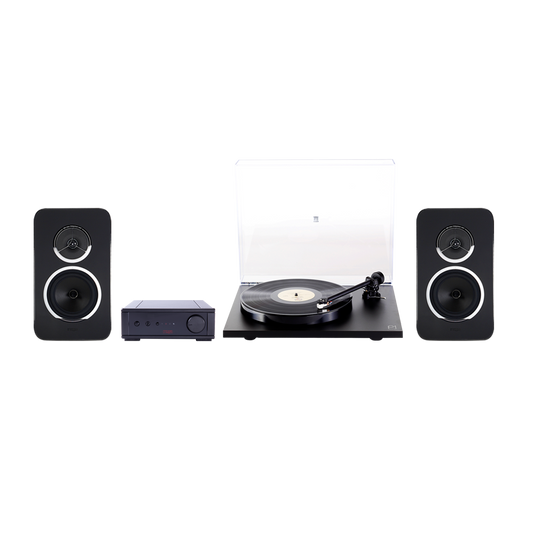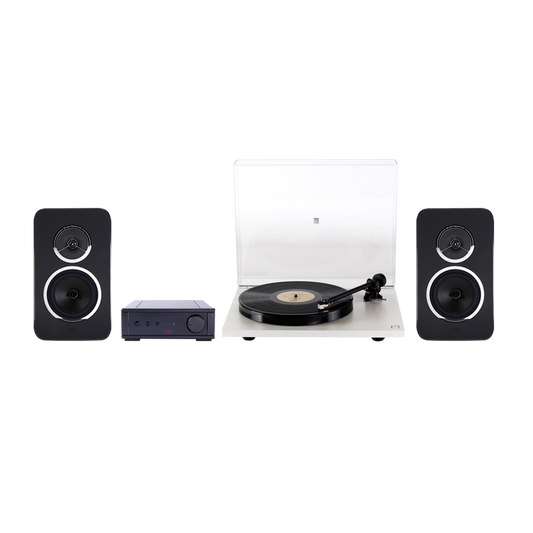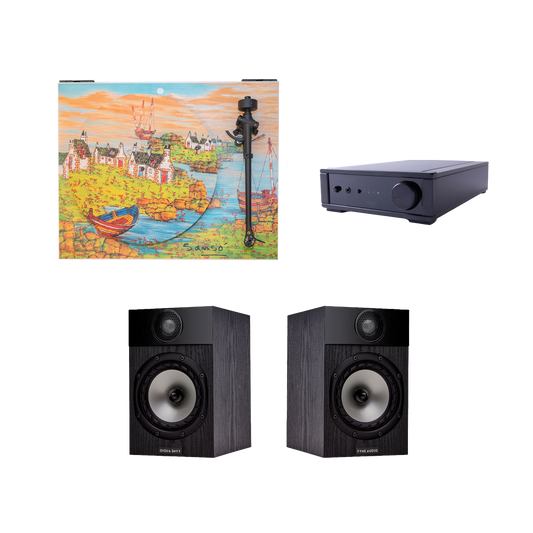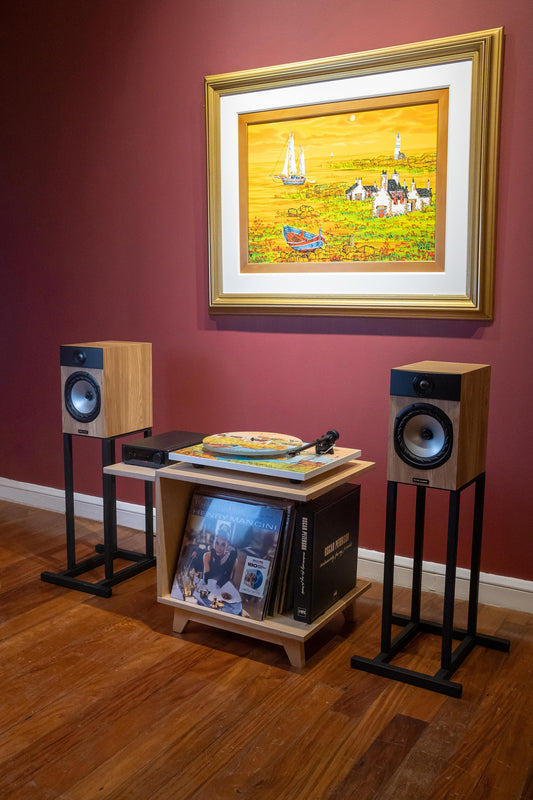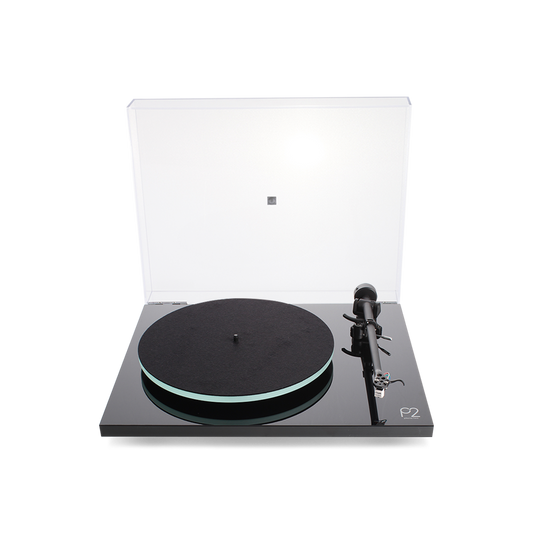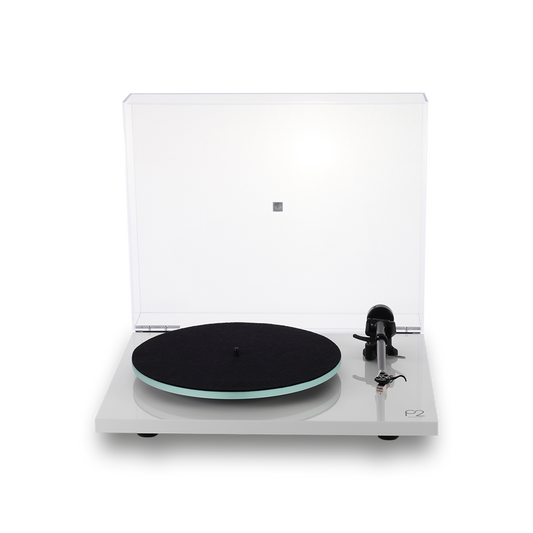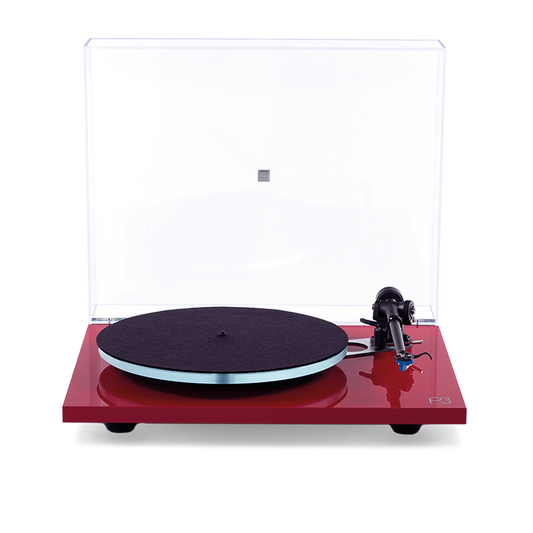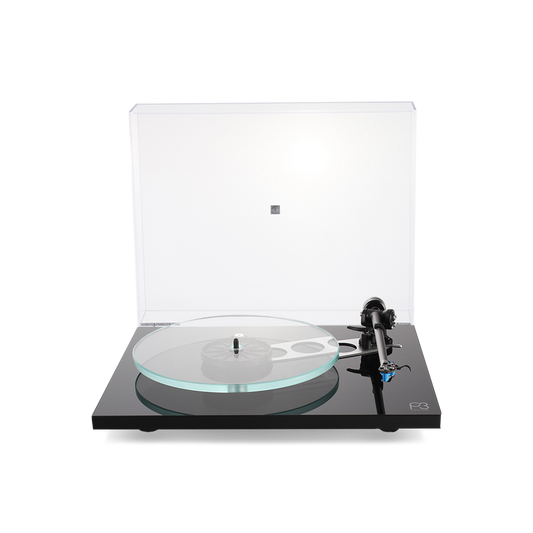Building your ideal audio system is a mix of science and art. The process requires choosing components that create a beautiful harmony. Here are those components.
1. Turntable

The turntable is what brings your records to life. It does this by spinning your vinyl records at a consistent speed and having its stylus read grooves on the vinyl.
There are generally two kinds of turntables:
- Belt-drive turntables use an independent motor and rubber belt to drive the platter. This kind of turntable is ideal for home playing, as it provides less noise and vibration.
- Direct-drive turntables have a platter that is integral to the motor. This kind of turntable is ideal for DJs.
Here at Sound Advice, we only sell belt-drive turntables. For beginners, we highly recommend the Planar 1 Plus, which comes with a factory-fitted carbon cartridge and a built-in phono stage. This is the ultimate plug-and-play turntable!
Additional parts: Cartridge and phono stage
When choosing a turntable, looking out for cartridge and phono stage inclusions is important. Turntables that include these two components are ideal for new listeners as they add ease and simplicity to the setup process.
Cartridge tips
It’s best to have a factory-fitted cartridge to ensure it is optimized for your turntable. Moving Magnet (MM) cartridges are known to be best for beginners, as they are easier to install and maintain. They are also more affordable compared to the Moving Coil (MC) cartridge.
2. Phono stage
The phono stage can come built-in with your turntable or amplifier, saving you the trouble of purchasing an external one. Phono stages act like the adaptor between the turntable and the amplifier. This process allows the stereo system to reproduce the music.
Depending on your preference, you may opt for an external phono stage, which can improve the musical experience.
Our recommendation:
The Planar 1 and Fono Mini A2D is the most optimal combination for beginners. These two components go so well together that Rega Research decided to create the Planar 1 Plus, a turntable combining both components.
3. Amplifier

The amplifier is the heart that pumps the music from your turntable into the speakers, so you can hear the music. Amplifiers also boost the depth and power of the bass, giving the music more body.
4. Speakers

Speakers produce sound and allow you to actually hear the music. Simply put, speakers are what make the music come alive from your turntable.
When choosing speakers, consider the size of your room and preferences in terms of convenience, sound quality, and upgrade features down the line.
There are generally two types of speakers:
- Active or powered speakers have built-in amplifiers, so they don’t require external receivers. These speakers are commonly used by beginners as the turntable setup will require fewer parts.
- Passive speakers will need to match with an amplifier or receiver. An external amplifier provides added benefits, such as more sound detail and better upgrade options in the future. This is why passive speakers are usually preferred by advanced listeners.
Active speakers
Active or powered speakers are usually user-friendly and affordable. You just need to pair them with a simple plug-and-play turntable with a built-in phono stage, such as the Rega Planar 1 Plus. Then, you’re good to go!
This setup cuts down your system into just two components, which is perfect for limited space.
Passive speakers
Passive speakers are recommended for more serious listeners looking to invest in their turntable setups. These speakers are versatile for upgrades and can save you money in the long run!
Speaker types depending on the size of your room
You can also choose your speakers depending on the size of your room:
- Bookshelf speakers are common for small to medium rooms. These speakers work best when placed on speaker stands. Our stands are specifically designed so that reflections do not occur and your sound remains pure. This dramatically enhances sound quality for the listener, especially regarding higher frequencies.
- Floor-standing speakers are best for large rooms, providing a more powerful and immersive sound.
Tips:
- Never place your speakers right beside your turntable! The vibrations from the speakers may affect the performance of your turntable and even cause the cartridge to shake.
- For beginners, we recommend the Wharfedale speakers. These are the best-performing speakers for a beginner’s budget.
5. Wires and cables
RCA connector
The RCA cables, sometimes called Phono Connectors, connect your turntable to the receiver. Depending on your system, the RCA wires can connect to the following:
- Phono stage
- Amplifier (In the phono stage input)
- Active or powered speakers
All Rega turntables come with a tailor-fit RCA. You don’t need to purchase this component separately.
Note: If your turntable or amplifier does not have a built-in phono stage, you will need another RCA cable for the external phono stage. The extra RCA cable will connect your phono stage to the amplifier.
Speaker cables

Speaker cables connect your amplifier and/or receiver to your speakers.
You’ll only need speaker cables for passive speakers. We recommend the Rega Duet Speaker Cables for beginners. For more serious listeners, we offer cable upgrades like the Couple 3 Interconnect (RCA).
Speaker cable tips to keep in mind
Tip #1: The length of speaker cables needed depends on how far your turntable is from your speakers.
The most common length for speaker cables is 2.5 meters for each wire, a total of 5 meters for a pair. Our Rega Duet Speaker Cables are pre-cut to this length. But if you need a shorter or a longer measurement, feel free to send us a message. We can accommodate any length preference.
Tip #2: Remember that your speaker cables must come in a pair, one for the left speaker and one for the right speaker.
Make sure to label each wire, dedicating one cable for a specific side. The amplifier outputs are labeled accordingly, one for the left and another for the right.
Tip #3: Do not attach a turntable with a built-in phono stage to a receiver’s or amplifier’s phono input.
This will duplicate the amplification and may destroy your products.


